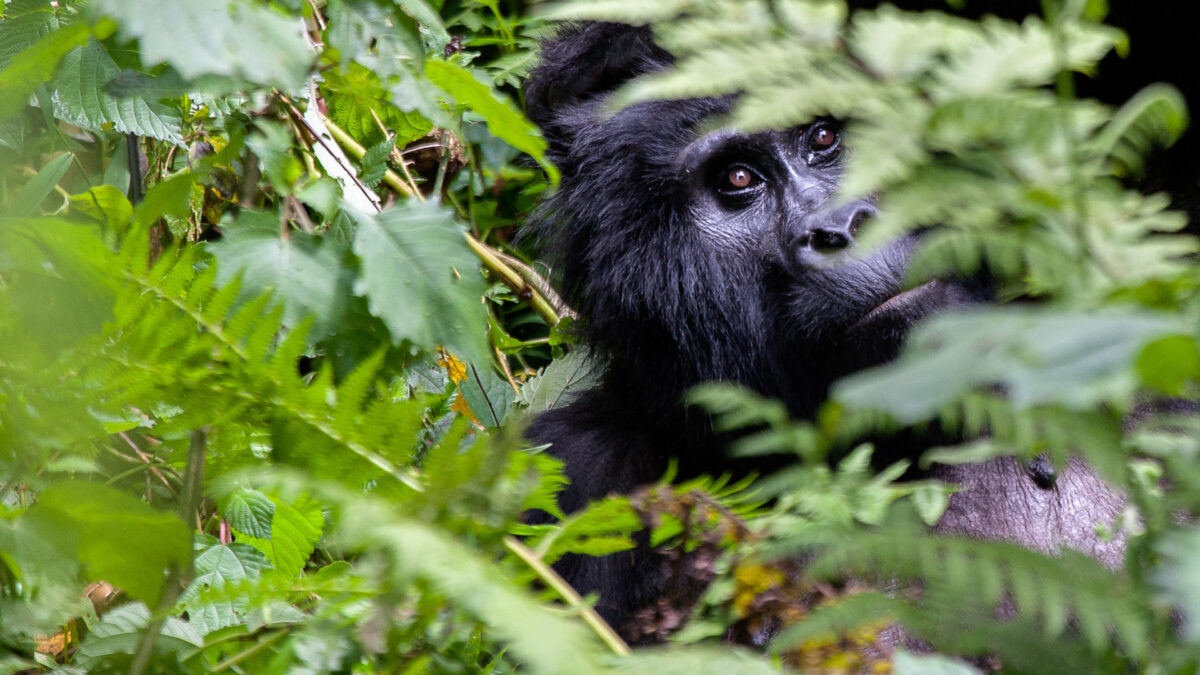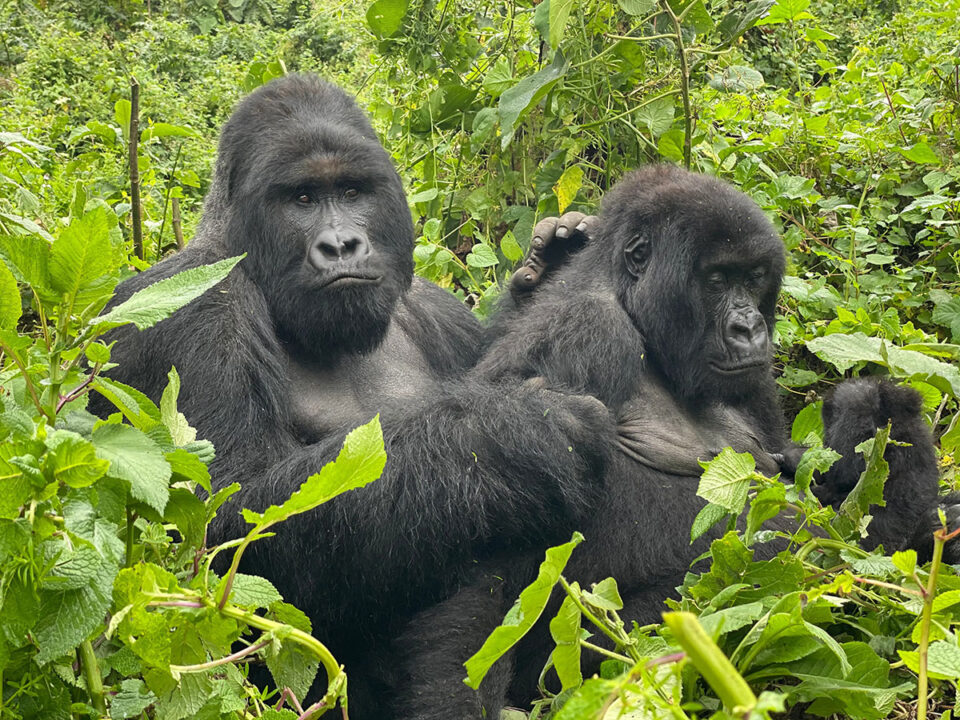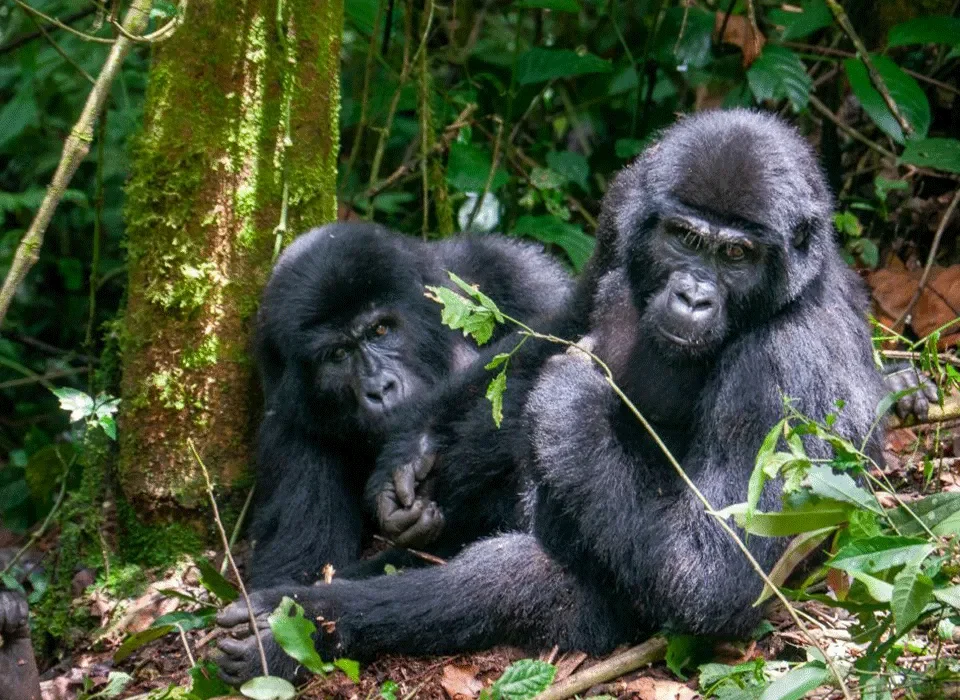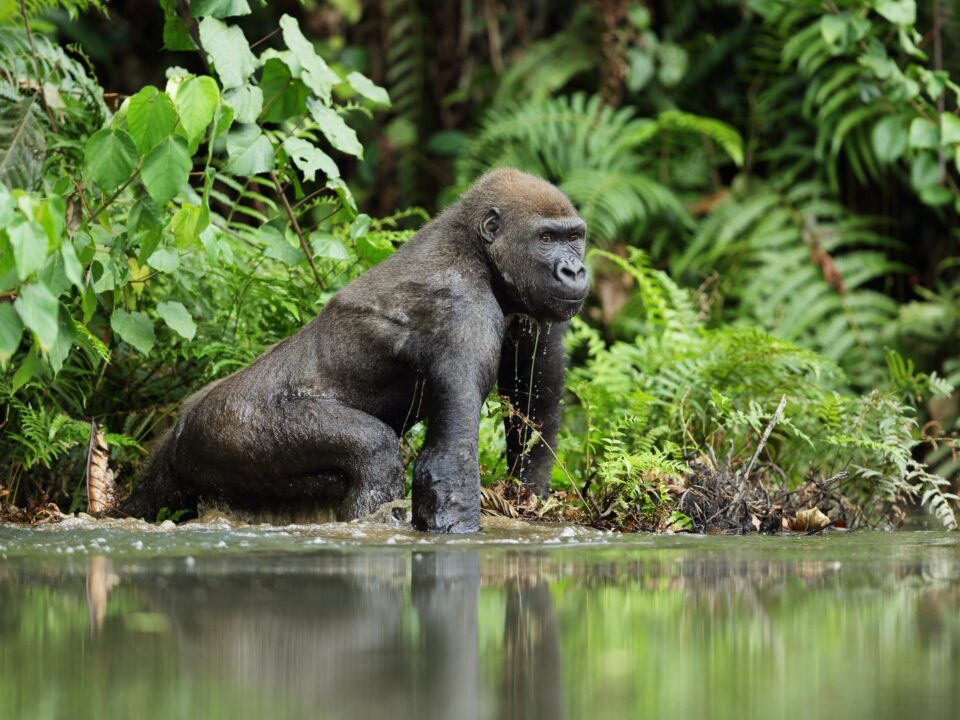Gorilla Trekking in Uganda 2024 – 2025

Best African Safaris in October
March 9, 2024
What to Consider before Booking a Gorilla Habituation Experience
March 9, 2024Gorilla Trekking Adventures in Uganda: Unveiling the Primate Kingdom (2024-2025)
Gorilla Trekking in Uganda 2024 – 2025 — Embark on an extraordinary journey through Uganda’s lush rainforests, known for their vibrant primate population. Bwindi Impenetrable National Park and Mgahinga Gorilla National Park stand as iconic havens for the endangered mountain gorillas, gracefully navigating steep hills and deep valleys within the remarkable tropical rainforests along the Great Rift Valley. Other primate-rich areas include Kibale Forest National Park, dubbed the “Primate Capital of the World,” Budongo Forest in Murchison Falls National Park, Kyambura Gorge in Queen Elizabeth National Park, and Kalinzu Forest, perched just above the Great Rift Valley.
Gorilla Trekking: A Life-Changing Safari Experience
Gorilla trekking holds a special place for many Africa travelers, offering a profound and life-changing encounter. The limited availability of permits in Rwanda, Uganda, and the Democratic Republic of Congo adds to the exclusivity and significance of this remarkable activity.
Discovering Mountain Gorillas in Uganda
Uganda boasts two national parks showcasing mountain gorillas: Bwindi Impenetrable National Park in southwestern Uganda and Mgahinga Gorilla National Park at the border of Rwanda’s Volcanoes National Park and the Democratic Republic of Congo’s Virunga National Park.
Bwindi Impenetrable National Park: A Haven for Diversity
Nestled at the edge of the Great Rift Valley, Bwindi Impenetrable National Park spans 321 sq km and comprises four gorilla trekking regions: Buhoma in the north, Ruhija in the east, Rushaga in the lower south, and Nkuringo in the upper south. The park is also renowned for its diverse bird population, particularly the Albertine Rift endemics.
Gorilla Families in Bwindi Impenetrable National Park
Bwindi hosts 18 gorilla families across its four trekking regions, with each family offering a unique and captivating experience for tourists. Notable families include Rushegura, Habinyanja, Mubare, and Katwe in Buhoma; Bitukura, Oruzogo, Mukiza, and Kyaguliro in Ruhija; and Mishaya, Nshongi, Kahungye, and others in Rushaga and Nkuringo.
Mgahinga Gorilla National Park: A Jewel at the Volcanoes’ Base
Situated at the base of volcanoes, including Muhavura, Sabyinyo, and Gahinga, Mgahinga Gorilla National Park covers 34 sq km, making it the smallest national park in Uganda. The park is home to the Nyakagezi gorilla family, boasting the highest number of silverback gorillas in Uganda.
Counting Mountain Gorillas in the Wild
As of the 2019 gorilla census in the Virunga Massif, over 1050 mountain gorillas thrive in the dense rainforests of Uganda, Rwanda, and the Democratic Republic of Congo.
Gorilla Trekking in Uganda: What to Expect
Gorilla trekking is a physically demanding adventure, navigating steep hills and deep valleys. The trek duration can range from 2 to 9 hours, contingent on the gorillas’ location. Travelers are advised to be physically fit for this immersive experience.
Gorilla Permits in Uganda
Securing gorilla permits well in advance is crucial due to their limited availability. Prices vary for different categories: USD800 for international visitors, USD700 for resident citizens, USD 80 for East African residents, and Ugandans pay USD 80.
Uganda Gorilla Trekking Tour Prices
Tour prices depend on transportation and accommodation choices. Budget gorilla trekking tours range from USD 1400-2000 per person, while luxury options can vary from USD 2500-5000. For personalized tour packages and safari prices, contact Trek Africa Expeditions.
Refunds/Cancellations of Gorilla Permits in Uganda
Gorilla permits in Uganda may be refundable, subject to specific conditions. Refunds are facilitated by Uganda Wildlife Authority. For more details on the refund process, reach out to Trek Africa Expeditions
Age Restrictions for Gorilla Trekking in Uganda
Gorilla permits are issued to travelers aged 15 and above who have submitted their travel documents upon booking. Exceptions for younger but physically fit travelers can be made with parental consent.
What to Pack for a Gorilla Trekking Safari in Uganda
Proper packing is essential for a comfortable trek. Key items include a backpack for essentials, a long-sleeved nature-friendly shirt, and photography gear with both short and long lenses. Travelers are advised against flash photography during the encounter.
Supporting Local Communities Through Gorilla Tourism
Gorilla tourism contributes significantly to local communities. A 10% gorilla permits fee directly benefits these communities, funding essential projects like clean water sources, hospitals, and schools. Additionally, travelers often contribute to sponsorships, supporting local school children through annual donations.
Gorilla Trekking: Impact Beyond Conservation
Gorilla tourism also positively influences employment in lodges, with approximately 70% of lodge staff being locals. Hiring porters from the community further supports families by providing income for education and family needs. Donations to NGOs focused on community support, particularly for AIDS orphans, are encouraged.
The Actual Encounter with Mountain Gorillas of Uganda
Facing mountain gorillas in their natural habitat is a once-in-a-lifetime experience. The day begins with an early wake-up call, followed by breakfast and gorilla briefing at the park headquarters. Trekkers are divided into small groups, each assigned to a specific gorilla family for an intimate and immersive experience.
Gorilla Trek Duration in Uganda
Although gorilla trekking is considered a full-day activity, the duration varies, ranging from 2 to 9 hours based on the gorillas’ location. Trekking times are influenced by the physical fitness of the trekkers and the terrain.
Best Accommodations in Bwindi Impenetrable National Park
Several accommodation options surround Bwindi Impenetrable National Park, catering to different preferences. Luxury options include Chameleon Hill Lodge and Buhoma Lodge, while mid-range choices encompass Ichumbi Gorilla Lodge and Buhoma Havens Lodge.
Best Accommodations in Mgahinga Gorilla National Park
With limited gorilla families in Mgahinga Gorilla National Park, accommodation choices are fewer. Luxury options consist of Mt. Gahinga Lodge, while mid-range alternatives include Lake Mutanda Resort.
Accessing Bwindi Impenetrable National Park
Travel to Bwindi can be by road or air. The road journey takes approximately 9-10 hours from Kampala, but a more convenient option is to fly into Kigali, Rwanda, and enjoy a 5-hour drive to Bwindi.
Scheduled flights to Kihihi or Kisoro airstrips, with transfers to the park headquarters.
Accessing Mgahinga Gorilla National Park
Mgahinga is accessible from Uganda or Rwanda. A recommended route is to fly into Kigali International Airport and take a 5-hour drive via Cyanika border. Road transfers are also available for travelers from Entebbe or Kampala, taking a tarmac road transfer that lasts approximately 10 hours.
Scheduled flights from Entebbe to Kisoro airstrip, followed by a 30-minute transfer to the park headquarters.
Best Time to Visit Uganda for Gorilla Trekking
While gorilla tracking is available throughout the year, the dry season from June to September and December to February is considered optimal. During these periods, the trails are drier, making hiking easier. Conversely, the rainy seasons from March to early May and late September to November offer lush green landscapes but more challenging trekking conditions. The latter period is excellent for game viewing in Uganda, making it an ideal time for sustainable tourism.
Combining Great Wildebeest Migration with Gorilla Trekking
For those seeking an unparalleled wildlife spectacle, combining gorilla trekking with the Great Wildebeest Migration is a perfect choice. The migration involves millions of wildebeest and thousands of zebras traversing the Masai Mara and Serengeti Eco System. Consider planning your visit during July to August to witness both incredible events.
Embark on a gorilla trekking adventure in Uganda, where every step leads to an encounter with the majestic mountain gorillas. Whether exploring the diverse regions of Bwindi Impenetrable National Park or the scenic Mgahinga Gorilla National Park, your journey promises a transformative experience, contributing to the conservation and well-being of these remarkable primates and the communities they inhabit. For a tailor-made tour package and detailed safari information, reach out to Trek Africa Expeditions. Your expedition into the heart of Uganda’s primate kingdom awaits!




